You can’t really be physically fit if you don’t have good posture. Therefore you have made a commitment to train for good posture in your water fitness class. Great! This may require you to rethink how you perform the exercises. You will need to be sure to keep your sternum lifted, your shoulders level, and your core braced so that you maintain your good posture no matter what exercise you are doing. Sometimes in your eagerness to increase intensity and burn calories you may inadvertently take your spine out of neutral alignment. Let’s take a look at some common exercises and see how this happens. All of the photos show the exercises performed with bad form.
Knee High Jog. This is a great exercise for increasing the heart rate and burning calories. But sometimes in your enthusiasm to increase intensity you may bring the knees too high, as in this picture, putting pressure on the low back and possibly aggravating the sciatic nerve. Bring the knees up just until the upper leg is parallel to the floor.
Inner Thigh Lift. This exercise improves hip flexibility because you are moving the leg in a diagonal plane. You might decide to increase your range of motion by touching your ankle with your opposite hand. But if you have to bend forward to reach the ankle, as in this picture, you are taking your spine out of neutral. Better to touch the inner thigh or knee instead.
Hopscotch. This exercise works the hamstrings. It is more important to maintain neutral alignment than to actually touch the heel with your opposite hand. If you have to bend to the side to reach the heel, as in this picture, then it is better to just swipe at the heel with your hand.
High Kick. This is a long lever exercise so it takes more effort and burns more calories than its short lever cousin, the knee high jog. The goal here is not to get the foot out of the water though. If you find yourself leaning backward to get the leg higher, as in this picture, you are bringing the leg too high and taking the spine out of neutral.
Rocking Horse. This exercise works multiple leg muscles and also challenges balance because it takes the body off-axis. Watch out for an overly enthusiastic rocking motion though. Arching the back while shifting the weight to the back leg, as in this picture, puts a lot of stress on the low back.
Greater intensity levels can be achieved when the exercises are performed with good posture and the power is put into the arm and leg movements. You might be surprised at how hard you can work while keeping the sternum lifted, the shoulders level and the core braced. See you in the pool!


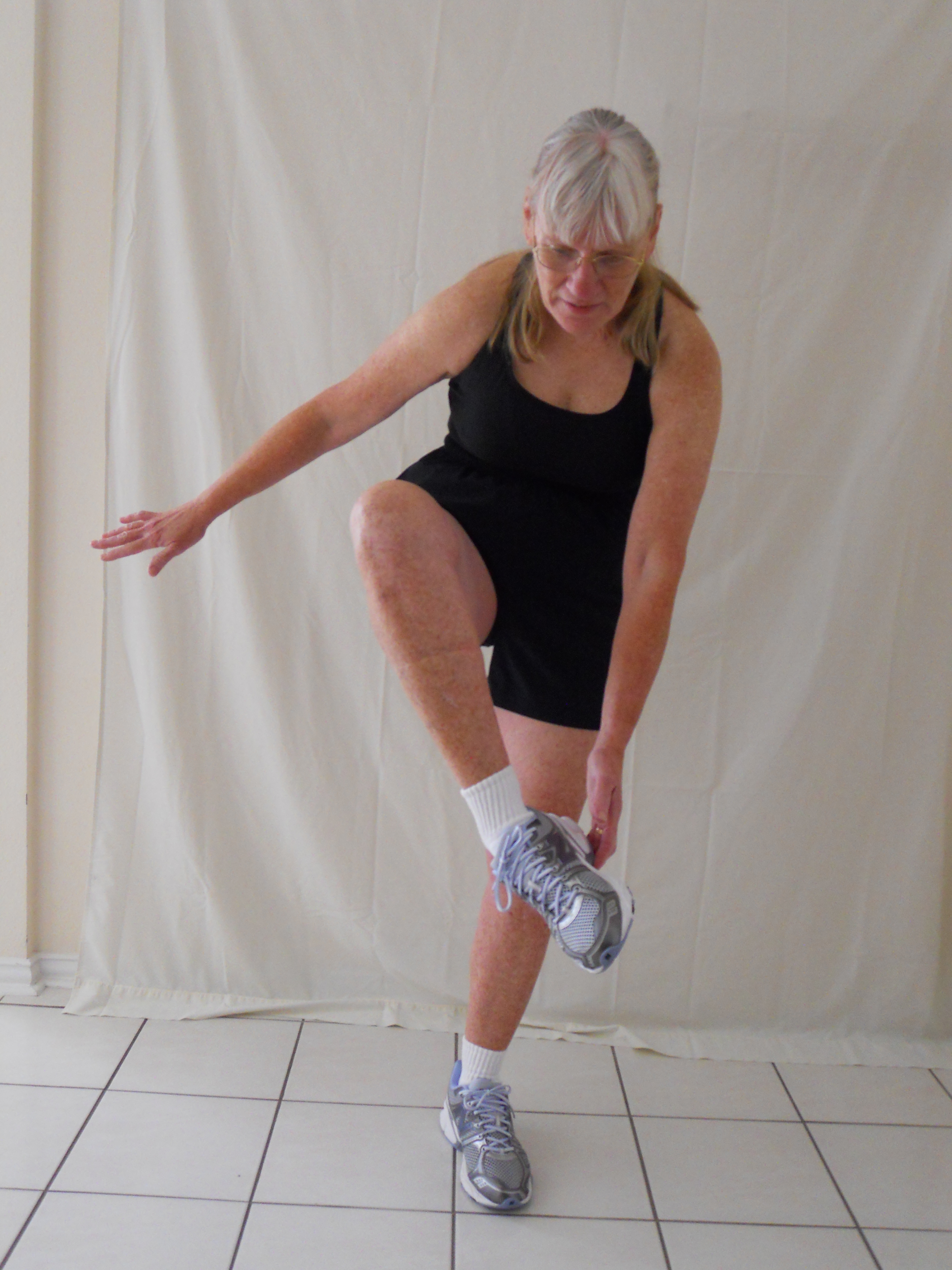
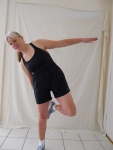
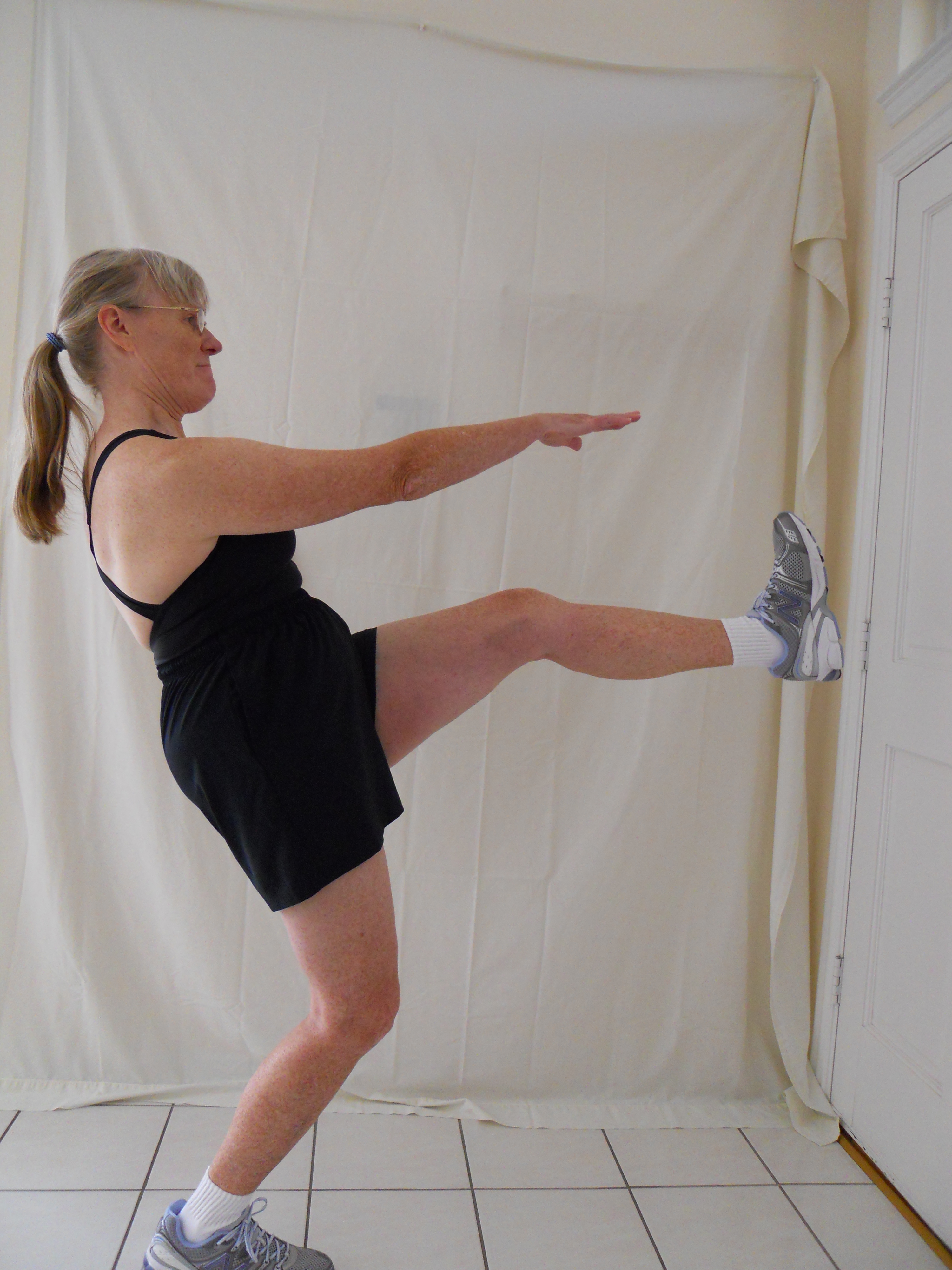
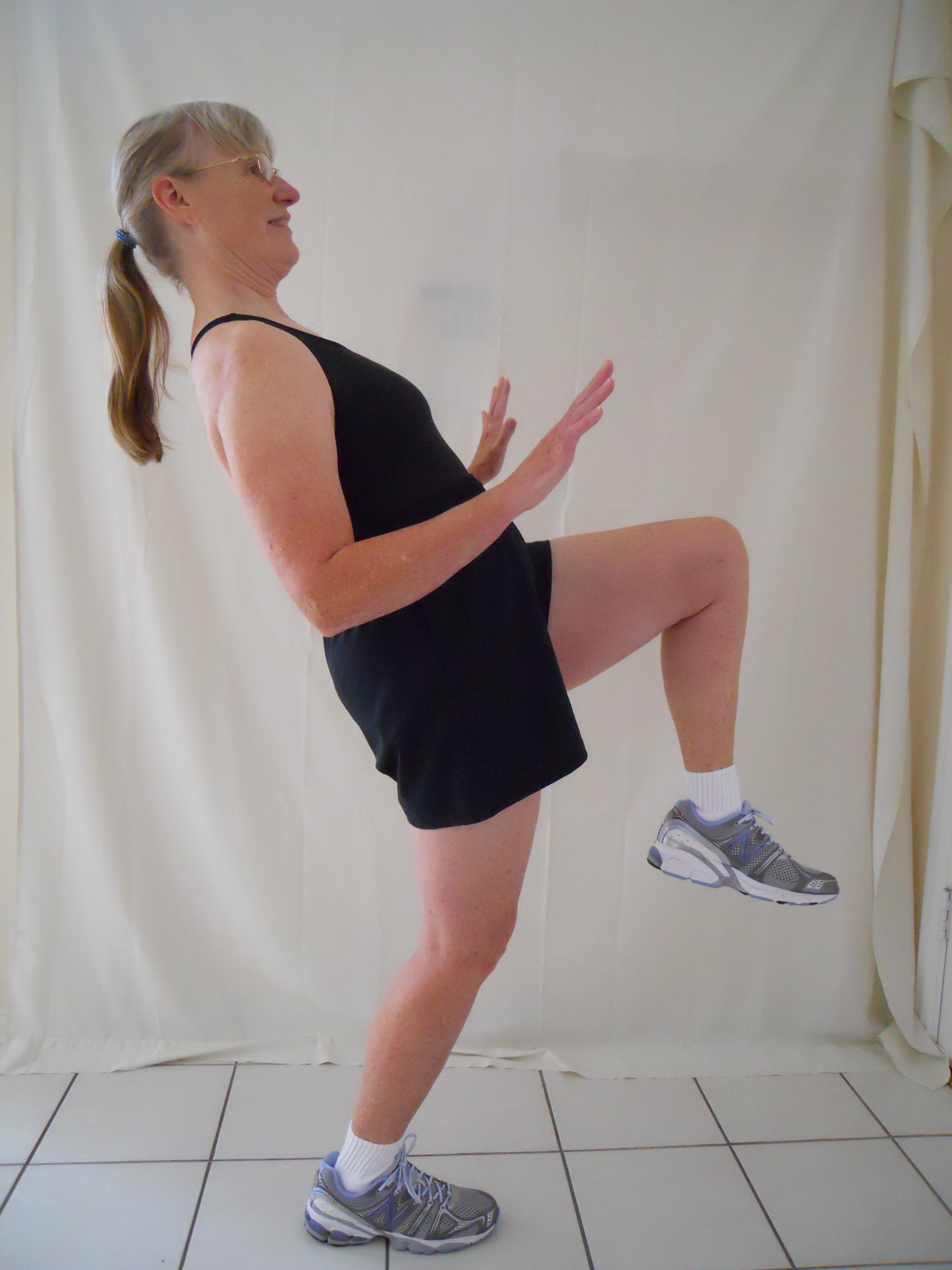

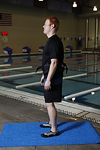 of time behind the steering wheel of your car, chances are that you are in a position known as passive forward flexion. In this posture, you are stretching out the muscles of your upper back, your erector spinae and your gluteus maximus. Once the muscles get stretched out, just like an elastic band that gets stretched out, it is hard to “tighten them up” again. Combine weak muscles on the back side of the body with the effects of gravity as we age, and the end result is that you become bent over, unable to stand up straight, and prone to poor balance and falls.
of time behind the steering wheel of your car, chances are that you are in a position known as passive forward flexion. In this posture, you are stretching out the muscles of your upper back, your erector spinae and your gluteus maximus. Once the muscles get stretched out, just like an elastic band that gets stretched out, it is hard to “tighten them up” again. Combine weak muscles on the back side of the body with the effects of gravity as we age, and the end result is that you become bent over, unable to stand up straight, and prone to poor balance and falls.
 ion equal to running on pavement. Instead concentrate on increasing your frontal resistance and dragging the water along with you. You will move slower, but you will work harder and your posture will improve.
ion equal to running on pavement. Instead concentrate on increasing your frontal resistance and dragging the water along with you. You will move slower, but you will work harder and your posture will improve.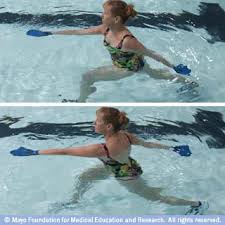
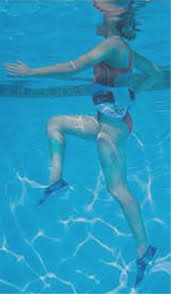
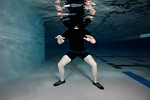
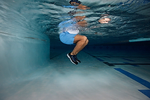
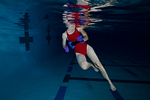
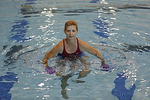 ough not so much for people who float easily. The same methods can increase intensity in deep water with the exception of jumping and suspended moves. In addition, deep water exercisers can elevate the shoulders out of the water with powerful leg moves or with sculling (see Photo 4). High intensities can be achieved in both shallow water and deep water.
ough not so much for people who float easily. The same methods can increase intensity in deep water with the exception of jumping and suspended moves. In addition, deep water exercisers can elevate the shoulders out of the water with powerful leg moves or with sculling (see Photo 4). High intensities can be achieved in both shallow water and deep water.
 If you live in the Dallas-Fort Worth area, you have a great networking opportunity right in your backyard! The Metroplex Association of Aquatic Professionals (MAAP) is an organization of water fitness instructors that meet 4-5 times a year for networking and education. Membership dues are a bargain at only $25 a year. Members get discounts on Continuing Education Trainings (CETs) presented by some of the top names in the business. Julie See, the President in charge of Education for the Aquatic Exercise Association (AEA) and the editor of AKWA magazine will present 2 exciting workshops on September 26 in Plano. Master Workouts are sample classes taught by MAAP members and they are free for members. MAAP President Gary Brindle will present the next Master Workout on Tabata, a hot new trend in fitness, on November 7 in Allen. MAAP has a website where you can find a calendar of events, a list of job openings in the area, and links to other websites where you can find certifications, swimsuits, water shoes, music, equipment and more. MAAP members get e-mail notices whenever the website has been updated. There is a link to the MAAP website on my website at www.waterfitnesslessons.com. Find it at the bottom of the page, click on it, and start networking!
If you live in the Dallas-Fort Worth area, you have a great networking opportunity right in your backyard! The Metroplex Association of Aquatic Professionals (MAAP) is an organization of water fitness instructors that meet 4-5 times a year for networking and education. Membership dues are a bargain at only $25 a year. Members get discounts on Continuing Education Trainings (CETs) presented by some of the top names in the business. Julie See, the President in charge of Education for the Aquatic Exercise Association (AEA) and the editor of AKWA magazine will present 2 exciting workshops on September 26 in Plano. Master Workouts are sample classes taught by MAAP members and they are free for members. MAAP President Gary Brindle will present the next Master Workout on Tabata, a hot new trend in fitness, on November 7 in Allen. MAAP has a website where you can find a calendar of events, a list of job openings in the area, and links to other websites where you can find certifications, swimsuits, water shoes, music, equipment and more. MAAP members get e-mail notices whenever the website has been updated. There is a link to the MAAP website on my website at www.waterfitnesslessons.com. Find it at the bottom of the page, click on it, and start networking!